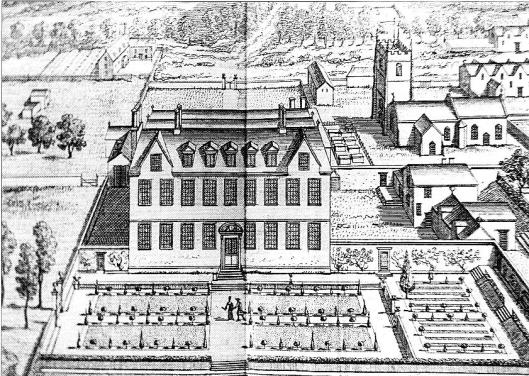Reipold, Peter

The newly rich would have built a house, like the one pictured in the sketch, as a symbol of their wealth.
When Spain conquered the Aztecs in 1519 and the Inca a few years later, they acquired massive amounts of gold and silver which the brought back to Spain. That money was spent of a many different things such as the construction of palaces, which entered the new money into the European economy. This increase in the money supply resulted in inflation in much of Europe, including England which, according to Olwell, had an average yearly inflation of 2% for most of the 16th century. At the same time the population of England was growing rapidly, almost “doubling between the 1500 and 1650” (Olwell).
The main result of the inflationary phenomenon was a change in the economic structure in England. Prior to this era the English economy was based on the idea of a fair price; if a sheep cost 5 shillings today, it always had cost 5 shillings and it would continue to cost 5 shillings in the future. Once inflation came, this economic structure of a fair and known price collapsed because as the money became worth less merchants, artisans and other vendors would have to raise their prices or they would starve. Thus, people had to accept the new reality that while a sheep may be 5 shillings today, next year it might cost 5 shillings and two pence. The result was an economic structure where the price of goods was variable.
The second effect was more of an evolutionary change; the rise of the landed gentry a ‘middle’ class of English Society. Now that it was an option to raise prices, some merchants and artisans took advantage and over time were able to earn incredible amounts of money. And when the church lands were sold off, these people were able to acquire much of the land. The result of this was a small ‘middle’ class (middle in the sense they were commoners, albeit extremely rich and landowning ones), of newly minted wealth and income generating land.
References:
Image: Lower House, Alderley. Digital image. Wikimedia Commons. Wikipedia. Web.
Olwell, Robert. “Origins of English Colonization.” The University of Texas, Austin. 9 Sept. 2014. Lecture.
